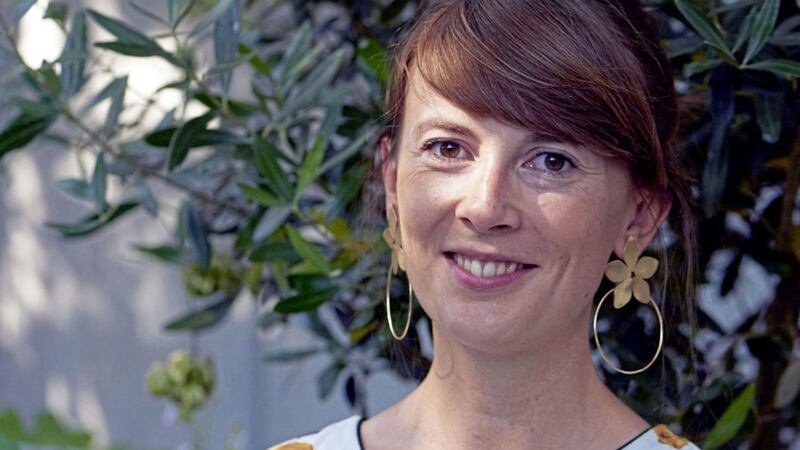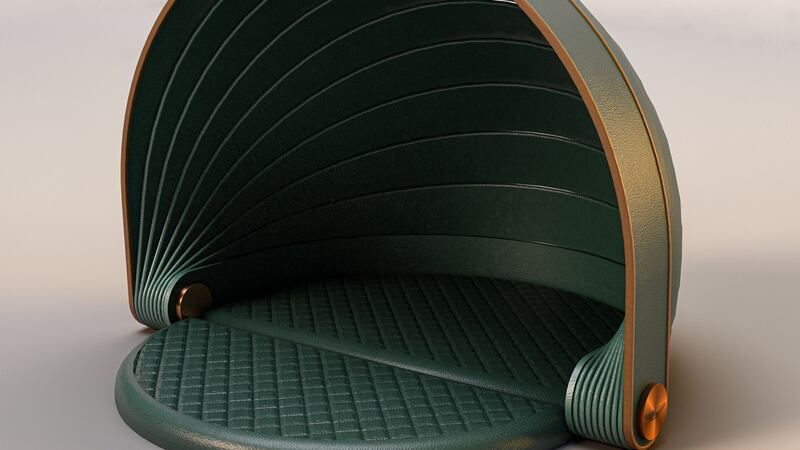MANY of us probably eat 'botanical' ingredients all the time – in curries, stir-fries and take-outs from our local Thai – but how much attention do we really pay to them?
We're talking flowers, seeds, leaves and fruit – and food writer Elly McCausland is on a mission to bring these small underrated ingredients to the forefront and celebrate the big role they can play.
"They aren't always centre-stage but they're the backbone of the dish and provide really important flavour accents – we don't always give these ingredients as much attention as they deserve," she says.
"A lot of the time, we think about the protein first, or the carbohydrate, and then we build a dish from there, whereas I'm thinking, 'OK I have a pear, what can I do with that?' Or a pineapple."
Her first cookbook, The Botanical Kitchen, is packed with recipes celebrating fruits (like orchard fruit or berries), leaves (banana leaves, kaffir lime leaves and herbs), flowers (lavender, saffron and elderflower) and seeds (cardamom or poppy). And it's all about letting these little powerhouses shine by doing as little as possible to them: "A lot of the recipes are quite natural and simple."
But some might feel a bit alien to many home cooks. After all, how often do you really cook with flowers?
"When I was describing the book to someone and said there was a chapter on flowers, they looked at me like I was a bit mad," McCausland admits. "I discovered lamb goes really well with lavender – just enough to get a slightly resinous, grassy taste, it really brings out the natural herbiness [of the meat]. Ditto with chicken and rose!"
But she knows these ingredients can seem daunting. "My advice would be to use sparingly, they are quite powerful, like rose and lavender, you don't want to end up with a dish tasting like soap.
"But the other thing I'd say is to be open-minded. We tend to associate floral flavours with sweets – Turkish delight, sugared violets – but actually a little bit of floral can have a really powerful and wonderful effect on savoury food." Think lavender, lemon and goats cheese focaccia, or chamomile rice with teriyaki pork and picked apple salad.
Are people she cooks for surprised by her (sometimes) unusual flavour combinations?
"Yes I think so – I hope pleasantly surprised. One of the recipes, the blue cheese risotto with caramelised balsamic pears... pears with risotto sounds very strange and I've definitely had some sceptical reactions, but people end up loving it. It's just not something you initially think goes together. It's the same with duck and lychee or anything with tea in it – people are surprised by how versatile tea leaves are to cook with."
British but based in Oslo for her (other) job as a university lecturer, McCausland has taken a lot of inspiration from her travels around the world. There's North African and Middle Eastern notes in her cauliflower, date and preserved lemon dumplings with pomegranate and tahini dipping sauce, and Japanese influence in her soba noddles with crab, pomelo, yuzu and avocado.
"There are cuisines that are a lot more complex than ours in their use of botanicals. Thai, Indian and south-east Asian food in general – if you think of the number of botanicals that go into a simple soup, or for a Thai curry paste, you're looking at probably 15 different ingredients, most of which are botanicals – galangal, lemongrass, vine leaves...
"The way they layer flavours, that's something we're working on in our cooking [in Europe] but it's something certain countries have been doing for thousands of years."
Something else that fascinates her is the history of these ingredients: "Knowing a bit more about the story behind the recipe can really make you want to make it more and enjoy it more. I think a lot of these ingredients we use without really thinking about it – especially common ones like bananas or apples."
In the book, she talks about the disappearance of local apple varieties and the strong history the UK has with saffron. "A tiny part of me hopes I can get people to try and take food for granted a bit less and enjoy local [produce]".
It seems to be a culture she's picked up on in Scandinavia (she lived in Denmark before Norway). "One of the things I really admire, particularly in Sweden and Denmark, is people really love food but they have a really good sense of balance, a bit like the French. You notice that no-one seems unhealthy, everyone is fit and active, they're outdoorsy people and they know when food is a treat to save for a special occasion."
She says there's also less of a diet culture. "When they have cake, they have a little bit and that's enough. It's a really healthy attitude to food – food is valued. It's somehow ingrained into the culture to enjoy good food, but not too much and not too little.
"I think we could actually learn a lot from that."
:: The Botanical Kitchen by Elly McCausland, photography by Polly Webster, is published by Bloomsbury Absolute, priced £26. Below are two recipes from the book for you to try.
ROAST DUCK THAI RED CURRY
(Serves 4)
4 duck legs
2tbsp sea salt flakes
2tbsp coconut oil
6 banana shallots, thinly sliced
4 garlic cloves, thinly sliced
1 lemongrass stalk, outer layers removed, finely sliced
4 kaffir lime leaves (fresh or frozen; avoid dried), finely shredded, stems discarded
400ml full-fat coconut milk
2tbsp Thai red curry paste
4tsp light muscovado sugar
1tsp ground turmeric
200ml hot chicken or vegetable stock
200g cherry tomatoes
Two large handfuls of spinach leaves
Juice of 1/2 a lime and wedges to serve
Fish sauce or dark soy sauce
400g can of lychees
A small bunch of Thai basil, leaves picked, or 30g roughly chopped coriander leaves
Method:
Rub the duck legs with the salt and place them in a single layer in a shallow dish. Chilling them in the fridge overnight, uncovered, will help you to get really crispy skin.
Pre-heat the oven to 210C/190C fan. Place the duck legs on a wire rack above an oven tray lined with foil and roast for 10 minutes to crisp the skin. Lower the oven temperature to 190C/170C fan, add a cupful of water or stock to the oven tray, then roast for 90 minutes, until the duck is tender and cooked through.
Meanwhile, make the curry. Heat the coconut oil over a medium-high heat in a large frying pan or wok; add the shallots and saute for five to 10 minutes. Add the garlic, lemongrass and lime leaves and cook for another couple of minutes until softened and aromatic.
Lower the heat to medium. Add a couple of tablespoons of coconut milk and the curry paste, sugar and turmeric, and saute for a couple of minutes, adding coconut milk if it starts to stick.
Add the stock and remaining coconut milk, then simmer for 15 minutes, until the sauce is thick, creamy and aromatic. Stir in the cherry tomatoes and spinach and cook for another 10-15 minutes, until the tomatoes start to break down. Lower the heat, then add the lime juice. Taste and check the seasoning – you may want to add some fish or soy sauce to make it more salty, depending on the brands of curry paste and stock you use, and you may want to adjust the lime juice and sugar.
Stir in the lychees to briefly heat through. Keep the sauce warm until the duck is ready.
When the duck legs are ready, place one leg on each of four plates. Divide the sauce equally between the four plates, pouring it over the duck legs. Sprinkle with the Thai basil or coriander leaves. Serve with steamed jasmine rice and lime wedges.
BAKED BRIE
(Serves 4-6)
45g pecan nuts
250g wedge of brie
70g fresh or frozen blackcurrants
2tsp thyme leaves or finely chopped rosemary needles
3tsp blackcurrant vinegar or balsamic vinegar
3-4tsp runny honey
Method:
Pre-heat the oven to 190C/170C fan.Put the pecans in a small oven dish and place in the oven for eight minutes, until toasted. Remove (leave the oven on), set aside to cool, then roughly chop.
Take a small baking dish, the right size to fit the piece of brie snugly. Slice the brie horizontally in half (so you have two flat triangles). Put one half in the dish, cut-side up. Take half the toasted pecans and press them gently into the cheese. Do the same with the blackcurrants. Sprinkle over half the thyme or rosemary, then drizzle over half the vinegar and half the honey.
Put the other piece of brie on top, rind side upwards (so you have essentially sandwiched the cheese back together as the wedge it was). Press the remaining pecans and blackcurrants onto the top of the cheese. Drizzle over the remaining vinegar and honey and sprinkle with the remaining thyme or rosemary.
Bake for 10-15 minutes, or until the cheese has melted and spread out a little in the dish. Remove from the oven, leave for five minutes, then dive in with crackers or good crusty bread.



